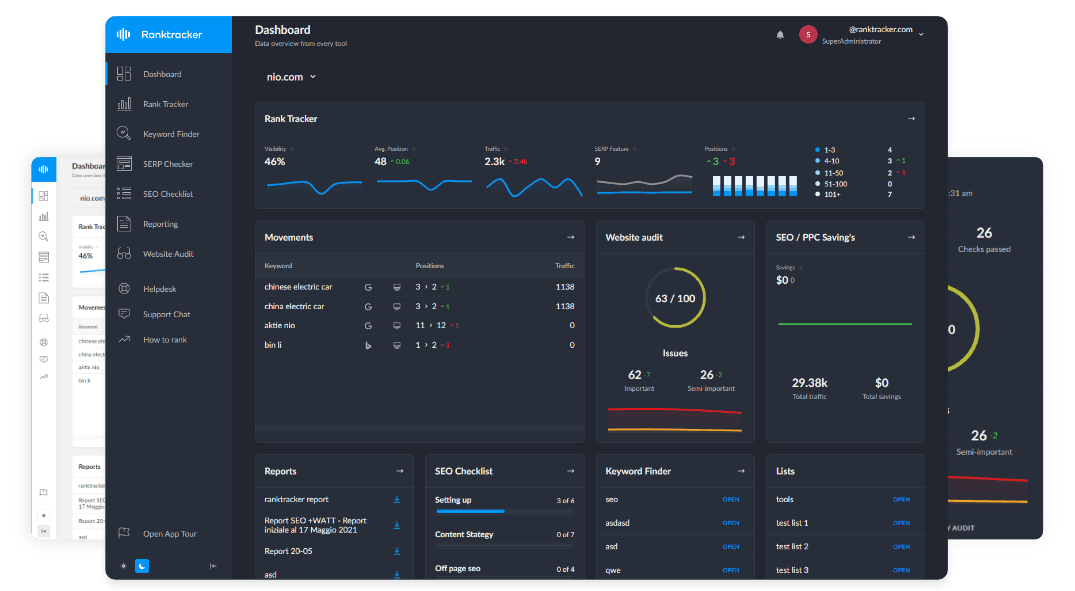Intro
Most businesses look at website design as just a matter of visuals and branding. But today, your website is much more than that. It plays a direct role in how people find you online. In a digital-first region like the UAE, you want to reach the right audience even before they’ve heard of your brand.
Your website is your digital storefront. And SEO is one of the best ways to bring potential customers to that storefront. When your site ranks well on relevant keywords, people discover you naturally through search.
But there are common web design mistakes that quietly hurt your rankings. This expert guide will help you spot those issues and fix them before they cost you valuable traffic. You’ll understand what’s holding your site back and how to improve it step by step.
So, let us walk you through the 7 most common web design mistakes that damage your SEO, and how to avoid them.
1. Slow Page Load Speed

It is one of the most common issues we come across in websites built without performance in mind. In markets like UAE where user expectations are high, even a delay of a couple of seconds can lead to users dropping off. Search engines like Google also take page speed seriously when determining rankings.
A slow-loading website affects both the user experience and your SEO score. Heavy animations, large images, unused scripts, and poorly coded themes can all contribute to sluggish performance.
The All-in-One Platform for Effective SEO
Behind every successful business is a strong SEO campaign. But with countless optimization tools and techniques out there to choose from, it can be hard to know where to start. Well, fear no more, cause I've got just the thing to help. Presenting the Ranktracker all-in-one platform for effective SEO
We have finally opened registration to Ranktracker absolutely free!
Create a free accountOr Sign in using your credentials
Tools like Google PageSpeed Insights and GTmetrix can help identify specific problems. If you’re targeting competitive keywords, fixing speed issues should be one of the first things you address.
2. Poor Mobile Experience
While not as common as it was a few years ago, poor mobile experience still remains a ranking blocker for many businesses in the UAE. With a large portion of the population accessing websites primarily through smartphones, your site must work flawlessly across all mobile devices. Common issues include buttons that are too small, text that’s hard to read, or layouts that break on smaller screens. Google uses mobile-first indexing, meaning it evaluates the mobile version of your website for ranking. So, it’s critical to build a responsive business website layout with touch-friendly elements and quick mobile load times. A seamless mobile experience improves engagement and keeps bounce rates low.
3. Missing or Improper Heading Structure
This is a silent issue that many website owners overlook. Headings (H1, H2, H3, etc.) are not just for design, they help Google understand the hierarchy and relevance of your content.
A proper heading structure improves readability for users and gives clarity to search engines. For example, every page should have a single H1 tag describing the main topic, followed by logical subheadings.
In the UAE market, where multilingual content and localization are often required, keeping headings structured helps maintain clarity across languages. Avoid using headings just for visual size. Use them to guide both readers and search engines through your page effectively.
4. Lack of Internal Linking
While writing the content for your website, many businesses forget to add internal links between related pages. Internal linking helps Google discover and crawl all your pages and gives context to what each page is about.
For example, your service pages should link to relevant blog posts and vice versa. In Dubai’s competitive digital space, where SEO efforts can be aggressive, internal links can give you an extra edge. They help distribute page authority and keep users engaged longer by guiding them through the right flow. Always use descriptive anchor text and ensure that every important page is linked from multiple places.
5. Unoptimized Images
Every image on your website should serve a purpose and be optimized for performance. Uncompressed or oversized images are one of the biggest causes of slow load times, especially for image-heavy sectors like hospitality or real estate.
Beyond file size, there are other important aspects too. You should use descriptive alt text for accessibility and SEO, choose the right formats (like WebP), and implement lazy loading where needed.
If your business relies on visual content, make sure that your images do not slow down the experience. Optimized images enhance visual appeal without hurting site performance.
6. Thin or Duplicate Content
You should have a proper content strategy that supports both user needs and SEO. Thin or duplicated content not only confuses search engines but also fails to provide value to your visitors.
The All-in-One Platform for Effective SEO
Behind every successful business is a strong SEO campaign. But with countless optimization tools and techniques out there to choose from, it can be hard to know where to start. Well, fear no more, cause I've got just the thing to help. Presenting the Ranktracker all-in-one platform for effective SEO
We have finally opened registration to Ranktracker absolutely free!
Create a free accountOr Sign in using your credentials
For example, if you are a SaaS company offering HR software in the UAE, don’t just create a basic product page. Add detailed use cases, customer stories, comparison pages, and industry-specific landing pages.
This helps target a wide range of keywords and builds trust. Duplicate content, especially when copying descriptions across multiple pages, signals poor quality to Google. Build unique, insightful content for every important section of your site.
7. Complex Site Navigation
Your navigation should be simple, intuitive, and focused on helping users find what they need. A cluttered menu with too many options, multi-level dropdowns, or unclear labels can quickly confuse visitors and push them away.
This is especially true for service-driven businesses in the UAE, where users often come with specific intent and expect smooth navigation.
Categories should be well-organized, and key pages should be reachable within two to three clicks. Website design agencies often suggest reworking the website design when navigation becomes too complex, to improve both user flow and SEO performance. A clear structure helps search engines understand your site better and keeps users engaged.
How to Audit Your Website for SEO & Design Issues
If you want to improve your search rankings and user experience, the first step is understanding where your website currently stands.
A simple audit can reveal hidden issues that might be hurting your visibility on Google or frustrating your visitors. Here are four key steps you can take to audit your website like a pro:
1. Check Your Site Speed and Performance
Page speed is a major ranking factor, and it directly impacts how long users stay on your site. To test your site speed, use tools like Google PageSpeed Insights, GTmetrix, or WebPageTest.
These tools provide detailed insights into load times, core web vitals, and performance scores across both mobile and desktop.
Pay close attention to large image files, unused scripts, and server response times. In regions like the UAE, where users often browse on mobile networks, even small delays can lead to drop-offs. Fixing speed issues not only boosts SEO but also improves your overall conversion rates.
2. Evaluate Mobile Friendliness
With Google using mobile-first indexing, your mobile site matters more than ever. Use Google’s Mobile-Friendly Test to check if your site works well on smartphones and tablets.
Watch out for elements that break on smaller screens, like buttons that are too small, overlapping text, or layouts that don’t resize properly.
Test your site manually across multiple devices, especially popular ones in your target region, such as iPhones and Android devices. A responsive, touch-friendly mobile design not only improves rankings but also makes users more likely to engage with your content.
3. Analyze Your On-Page SEO Structure
Your content should be easy for both users and search engines to understand. Use tools like Ranktracker, Screaming Frog SEO Spider or Ahrefs Site Audit to crawl your website and identify issues like missing meta titles, duplicate content, improper heading structures, and broken links.
The All-in-One Platform for Effective SEO
Behind every successful business is a strong SEO campaign. But with countless optimization tools and techniques out there to choose from, it can be hard to know where to start. Well, fear no more, cause I've got just the thing to help. Presenting the Ranktracker all-in-one platform for effective SEO
We have finally opened registration to Ranktracker absolutely free!
Create a free accountOr Sign in using your credentials
Ensure every page has a single H1 tag, meaningful subheadings (H2, H3), and optimized metadata. URLs should be short, keyword-rich, and clearly structured. This kind of cleanup can make a big difference, especially if your goal is to rank well in a competitive environment like Dubai’s local search landscape.
4. Review Navigation and Internal Linking
A well-organized website keeps both users and search engines happy. Go through your site's navigation to check for clarity and simplicity. All important pages should be accessible within two to three clicks from the homepage.
Use tools like Hotjar or Microsoft Clarity to track how users interact with your site. Look for drop-offs or confusing navigation patterns. Also, review internal linking. Use descriptive anchor text and ensure that key service pages, blogs, and landing pages are interlinked logically. This boosts crawlability, distributes link equity, and improves the overall SEO strength of your website.
Conclusion
While these points might seem complex at first, the main idea is straightforward. Your goal should be to build a website that works well for both users and search engines. Every design and content decision you make has an impact on how people find and interact with your business online.
As a business, your website is often the first impression you leave. Users expect fast-loading pages, clear navigation, and easy access to information. Every second matters. Also, search engines look at how your site is structured, how content is presented, and how well everything is connected.
When your website is designed with both users and SEO in mind, it starts performing better across the board. It not only improves your search rankings but also increases user engagement, builds trust, and leads to more conversions. Fix the small issues, and the long-term impact will be significant.

